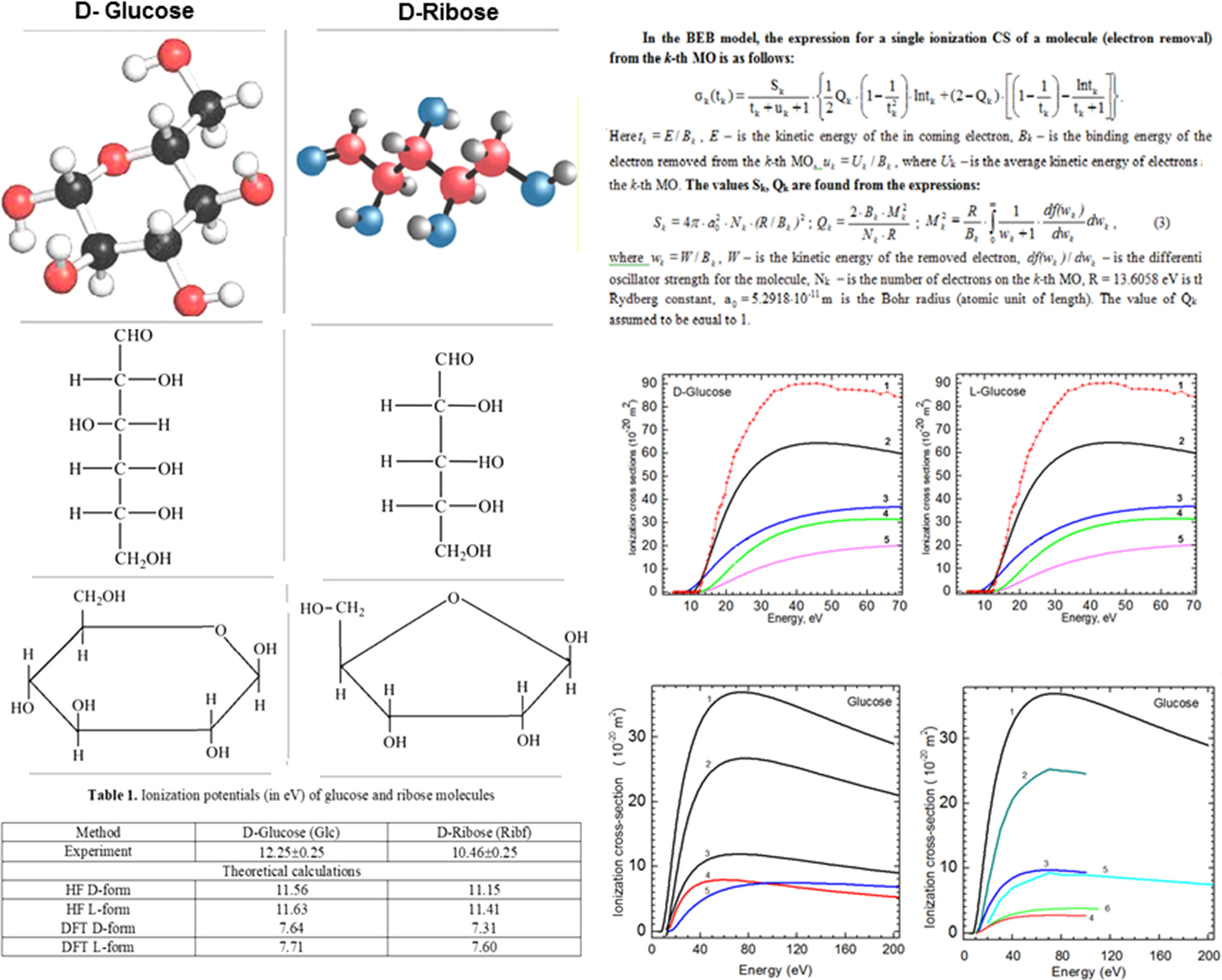https://doi.org/10.1140/epjd/s10053-023-00766-7
Regular Article – Atomic and Molecular Collisions
Ionization of glucose and ribose molecules by electron impact
1
Institute for Nuclear Research (ATOMKI), 18/C Bem Square, 4026, Debrecen, Hungary
2
Institute of Electron Physics, National Academy of Sciences of Ukraine, 21 Universitetska Str., 88017, Uzhhorod, Ukraine
Received:
28
July
2023
Accepted:
5
October
2023
Published online:
27
October
2023
The ionization potentials and total ionization cross sections of glucose and ribose monosaccharide molecules were measured by electron impact at energies up to 70 eV. Using two methods, Hartree–Fock (HF) and density functional theory (DFT), the structure of d- and l-forms of glucose and ribose molecules were calculated using Gaussian. The energy characteristics of the molecular orbitals (MOs) were used to calculate the summarized single ionization cross sections (CS) based on the MOs by the Binary–Encounter–Bethe (BEB) and Gryzinsky (Gryz) models. By normalizing to Gryz-DFT cross sections at thresholds, at 11 eV (Glucose) and 12.65 eV (Ribose), the absolute values of the measured total ionization cross sections of these molecules were obtained. The ionization potentials of glucose and ribose molecules were evaluated from binding HOMO MOs energies and compared with the measured values: 12.25 ± 0.25 eV (Glucose) and 10.46 ± 0.25 eV (Ribose). The contributions of the higher orbitals HOMO, HOMO-1, HOMO-2 to the Gryz-DFT cross section were evaluated.
Copyright comment Springer Nature or its licensor (e.g. a society or other partner) holds exclusive rights to this article under a publishing agreement with the author(s) or other rightsholder(s); author self-archiving of the accepted manuscript version of this article is solely governed by the terms of such publishing agreement and applicable law.
© The Author(s), under exclusive licence to EDP Sciences, SIF and Springer-Verlag GmbH Germany, part of Springer Nature 2023. Springer Nature or its licensor (e.g. a society or other partner) holds exclusive rights to this article under a publishing agreement with the author(s) or other rightsholder(s); author self-archiving of the accepted manuscript version of this article is solely governed by the terms of such publishing agreement and applicable law.





